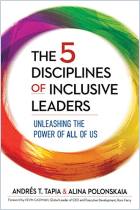Зарегистрируйтесь на getAbstract, чтобы получить доступ к этому краткому изложению.

Зарегистрируйтесь на getAbstract, чтобы получить доступ к этому краткому изложению.
Alida Miranda-Wolff
Cultures of Belonging
Building Inclusive Organizations that Last
HarperCollins Leadership, 2022
Что внутри?
Create a culture of belonging, and watch your employees thrive.
Recommendation
You can’t expect your employees to thrive unless they feel wanted and needed – particularly if they represent marginalized populations. Alida Miranda-Wolff offers a sensible, comprehensive approach for creating an environment that embraces everyone and prioritizes relationships. The author argues that cultures rooted in “diversity, equity, inclusion” and belonging (DEIB) offer the best opportunities for employees to flourish. Leaders must work hard, show commitment and expect resistance as they formulate and execute cultural change, but a respectful, productive and welcoming organization will be their reward.
Summary
About the Author
Alida Miranda-Wolff is founder and CEO of Ethos, a consultancy which helps organizations create cultures where employees feel comfortable and productive. She also wrote The First-Time Manager: DEI: Diversity, Equity, and Inclusion.





















Comment on this summary